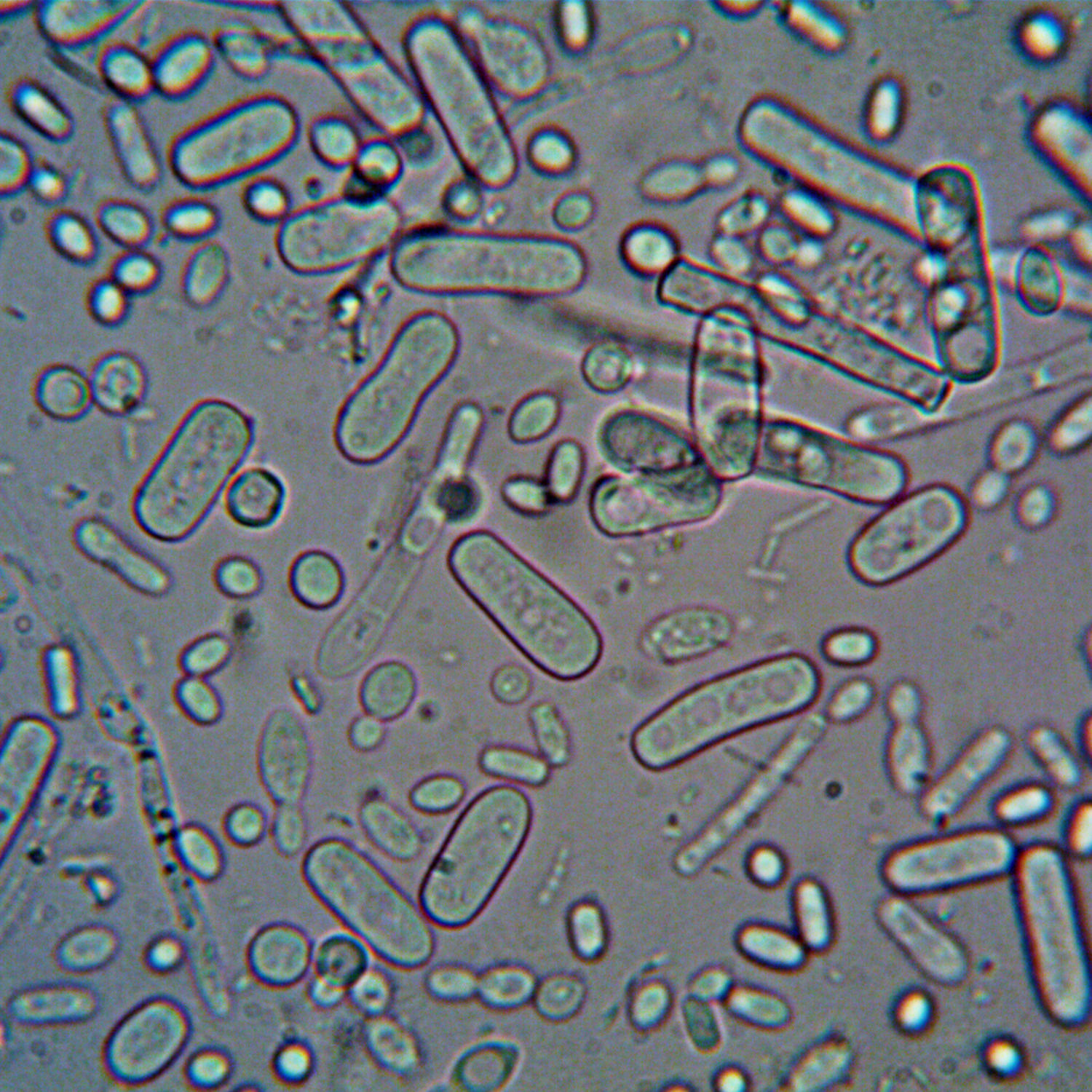Next Generation CRISPR: How Seek Labs’ Programmable Therapeutics Are Expanding the Promise of CRISPR-Powered Innovation
At Seek Labs, every day is World CRISPR Day. Our work in CRISPR-based programmable therapeutics builds upon the same principles that make this technology so revolutionary: precision, adaptability, and speed. As we reflect on this transformative technology, we’re not just looking at what CRISPR has achieved but what comes next.
By Alison O'Mahony | October 23, 2025
October 20th marked World CRISPR Day, a celebration of one of the most transformative scientific discoveries of this century. CRISPR-Cas technology has revolutionized how scientists can modulate genetic code with unprecedented precision, efficiency, and accessibility, deepening our understanding of diseases to move toward innovative global health solutions.
In just over a decade, CRISPR has reshaped the landscape across various fields and industries: biomedicine and therapeutics; public health and diagnostics; agriculture and food systems; and synthetic biology and bioengineering. Each of these sectors has experienced accelerated innovation, largely due to CRISPR’s efficiency, precision, and modularity as a genome-editing platform. Indeed, diseases long considered incurable or classified as an “unmet medical need” are benefiting from CRIPSR’s ability to modulate the genetic root cause and provide effective solutions. The scale, pace, and impact of CRISPR-based therapies and applications merits celebration. But it’s even more exciting to consider what more we can achieve with this paradigm-shifting technology.
This is where Seek Labs is today. We are leveraging AI and CRISPR-based genome engineering as a cornerstone of our translational research platform, advancing therapeutic innovation at the intersection of health and disease mitigation.
A Nobel Prize-Winning Revolution
CRISPR (Clustered Regularly Interspaced Short Palindromic Repeats) was first identified in the late 1980s as a peculiar DNA sequence in bacteria. Later, in the early 2000s, its role as part of bacteria’s adaptive immune system was elucidated. But the major breakthrough came in 2012, when researchers demonstrated its programmable utility for precise genome editing.
To withstand relentless viral invasions (bacteriophage), bacteria evolved a sophisticated immune mechanism: integrating short fragments of viral DNA into their own genome that act like a molecular archive. These fragments are like genetic wanted posters of prior invaders, enabling the bacteria to rapidly recognize and destroy the viral genomes when invaded again, which effectively blocks recurring viral threats before infection can take hold.

The story of CRISPR began in bacteria like these, where scientists discovered repeating DNA sequences that act as part of the immune system, storing fragments of viral DNA to recognize and defend against future infections.
In 2012, Dr. Jennifer Doudna and Dr. Emmanuelle Charpentier uncovered how to harness this bacterial defense system as a programmable gene-editing platform. They coupled CRISPR with a nuclease called Cas9 to generate a molecular mechanism that could locate and cleave DNA with unprecedented precision. This effectively introduced biology’s first true find-and-fix function, which could be used as a tool or a therapy. This landmark discovery earned Dr. Doudna and Dr. Charpentier the 2020 Nobel Prize in Chemistry and ushered in a new, transformative era in molecular biology and therapeutic innovation.
How CRISPR Works
CRISPR can be described as programmable molecular scissors, made up of two key components: a Cas enzyme, the catalytic nuclease that precisely recognizes, binds, and cuts DNA or RNA genetic sequences at a specific site. This specific site is identified by the other key component, a guide RNA (gRNA): a short strand of RNA that encodes a direct repeat sequence and a short spacer sequence that are complimentary to a specific sequence in an organism’s genome or transcriptome. gRNAs act like a GPS code that anchors the scissors to cut precisely at the target site.
Once CRISPR makes a targeted cut, the cell’s innate repair machinery is activated, adding, deleting, or rewriting segments of DNA or RNA to restore the sequence. Because these repair pathways can be error-prone, advanced strategies have been developed to enhance CRISPR’s precision, including the use of repair templates or engineered editing systems that accurately correct disease-causing mutations and achieve predictable therapeutic outcomes.
How CRISPR works: A guide RNA directs the Cas9 enzyme to a specified location on the DNA strand, where it makes a precise cut. The cell’s natural repair mechanisms are then deployed to edit or replace the targeted sequence. Scientists are able to harness this repair mechanism to correct genetic errors with extraordinary precision.
The adaptability of CRISPR across biological contexts makes it an unprecedented therapeutic modality: exceptional programmability across virtually any genetic target and functional flexibility spanning cleavage, editing, and detection. By simply redesigning its guide sequences, CRISPR can be redirected to new genes, loci, or hosts, transforming discovery into intelligent and intentional design. And this can now be enhanced by the power of AI/ML.
This concept of “programmable precision” has inspired a generation of innovators to ask, what else could be programmable?
From Editing to Ablating: Seek Labs’ PTAP Approach
At Seek Labs, that question prompted the development of the Programmable Target Ablation Platform (PTAP™), a novel class of programmable therapeutics that harness CRISPR’s precision in a fundamentally different way. Whereas traditional CRISPR systems are designed to edit defective genes within the human genome, PTAP is engineered to selectively target and ablate the genetic material of invading pathogens such as viruses or other disease-associated transcripts. By deploying multiplexed programmable gRNAs, PTAP identifies and disrupts the essential genetic regions required for pathogen survival and replication. Once these regions are destroyed, the invader can no longer reproduce or sustain infection, effectively halting disease progression at its source.
Simply put, CRISPR gene editing is like sending a software update to fix a bug in a computer’s operating system; it carefully finds and fixes part of the code so the system runs correctly. PTAP, on the other hand, acts like antivirus software. It doesn’t alter the computer’s own programming; instead, it scans for malicious code (like viral genes) and directly disables them, keeping the computer’s operating system safe and functioning normally.
How PTAP works: Unlike traditional CRISPR systems that edit genes within the human genome, Seek Labs’ PTAP™ platform is designed to irreversibly disrupt invading pathogens. By using multiple programmable guide RNAs to target and destroy the sequences essential for replication, PTAP prevents replication and further infection without altering the host’s genome.
Where AI Meets CRISPR: How BioSeeker Accelerates the Process
Each PTAP therapeutic begins with BioSeeker™, Seek Labs’ AI-powered discovery engine. BioSeeker scans thousands of pathogenic genomes across strains, viral families, and disease subtypes to identify regions that remain stable across evolution. These regions represent a pathogen’s genetic vulnerabilities where CRISPR-based therapeutics can be precisely deployed. In parallel, BioSeeker scans host genomes to predict sequences that have minimal off-target potential, along with other considerations for optimal efficacy and safety. All of these mapped insights are captured in Seek Labs’ Global Disease Atlas, a dynamic bird’s-eye view of global threats and their potential genetic targets. Together, BioSeeker and the Global Disease Atlas provide the programmable blueprints for the design of PTAP therapeutics.
By merging CRISPR-based programmability with BioSeeker design, Seek Labs has built an AI-powered programmable operating system for rapid disease response. This convergence of disciplines establishes a powerful new framework for therapeutic innovation; one capable of dramatically compressing discovery and development timelines while upholding high standards of safety, reproducibility, and scalability.
Responsible Innovation in the Era of CRISPR
With the ability to precisely alter or eliminate genetic material comes profound responsibility. Seek Labs is committed to advancing CRISPR-based technologies with safety, transparency, and ethical integrity at the forefront. This means we prioritize close collaboration with regulatory authorities, research partners, and global health organizations to ensure every innovation benefits the public good.
Our mission extends beyond innovation; it’s about measurable impact. We measure success by our ability to translate programmable science into real-world solutions that improve global health.
Looking Toward the Future
World CRISPR Day reminds us that scientific innovation begins with curiosity and courage. The discovery of CRISPR potential by Dr. Jennifer Doudna and Dr. Emmanuelle Charpentier–as well as the contributions of so many others–has transformed biology from an observational science into a programmable engineering discipline. One where genetic code can be written, edited, and optimized.
At Seek Labs, we’re extending this paradigm to the way the world understands disease, where it’s viewed as a biological error that can be detected and disabled through programmable intervention. Our platforms, PTAP™ and BioSeeker™, are engineered to operate with speed and precision, reducing disease burden and accelerating recovery at a global scale.
CRISPR started a new chapter in biology; Seek Labs is writing the next one, where programmable therapeutics can revolutionize how the world responds to disease.
Alison O’Mahony, PhD is Vice President of Therapeutic R&D at Seek Labs, where she leads multidisciplinary teams uniting AI, bioengineering, and translational science to accelerate next-generation therapeutics. As a trained immunologist with more than 25 years of experience spanning phenotypic drug discovery, translational biology, and bioinformatics, she has dedicated her career to advancing data-driven, human-centered innovation that improves global health outcomes. Dr. O’Mahony has held leadership roles at Recursion Pharmaceuticals, Eurofins, and DiscoverX, and was a former Staff Investigator at the Gladstone Institutes (UCSF).


